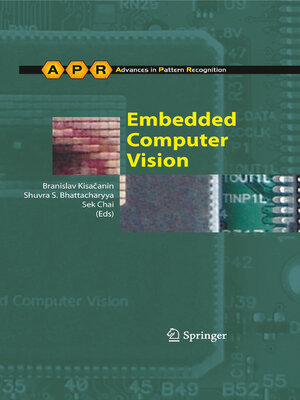Embedded Computer Vision
ebook ∣ Advances in Computer Vision and Pattern Recognition
By Branislav Kisacanin

Sign up to save your library
With an OverDrive account, you can save your favorite libraries for at-a-glance information about availability. Find out more about OverDrive accounts.
Find this title in Libby, the library reading app by OverDrive.



Search for a digital library with this title
Title found at these libraries:
| Library Name | Distance |
|---|---|
| Loading... |
As a graduate student at Ohio State in the mid-1970s, I inherited a unique c- puter vision laboratory from the doctoral research of previous students. They had designed and built an early frame-grabber to deliver digitized color video from a (very large) electronic video camera on a tripod to a mini-computer (sic) with a (huge!) disk drive—about the size of four washing machines. They had also - signed a binary image array processor and programming language, complete with a user's guide, to facilitate designing software for this one-of-a-kindprocessor. The overall system enabled programmable real-time image processing at video rate for many operations. I had the whole lab to myself. I designed software that detected an object in the eldofview,trackeditsmovementsinrealtime,anddisplayedarunningdescription of the events in English. For example: "An object has appeared in the upper right corner...Itismovingdownandtotheleft...Nowtheobjectisgettingcloser...The object moved out of sight to the left"—about like that. The algorithms were simple, relying on a suf cient image intensity difference to separate the object from the background (a plain wall). From computer vision papers I had read, I knew that vision in general imaging conditions is much more sophisticated. But it worked, it was great fun, and I was hooked.







